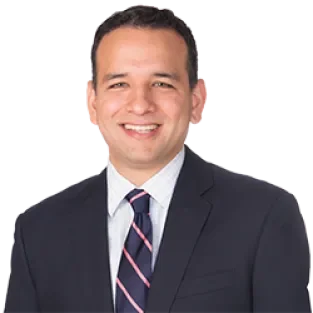ASAP
New York City Amends Its Sick Leave Law to Align with State Law and Adds New Requirements for City Employers
On September 29, 2020, New York City Mayor Bill de Blasio signed New York City Council Int. No. 2032-A, which largely brings the New York City Earned Safe and Sick Time Act (ESSTA) into alignment with the New York State Sick Leave Law (New York Labor Law § 196-b) (NYSSLL) that took effect September 30, 2020. The amendments to ESSTA, however, exceed the requirements of the NYSSLL in certain areas and impose additional burdens on NYC employers.
Changes to Align ESSTA with the NYSSLL
The critical amendments to ESSTA designed to bring consistency between ESSTA and the NYSSLL include the following:
- ESSTA now requires that NYC employers allow employees to accrue safe and sick leave as noted below:
Employer Size | Leave Entitlement |
4 or fewer employees and employer net income of less than $1 million | Up to 40 hours of Unpaid safe and sick leave |
4 or fewer employees and employer net income greater than $1 million Or Employers with 5 to 99 employees irrespective of net income | Up to 40 hours of Paid safe and sick leave |
Employers with 100 or more employees irrespective of net income | Up to 56 hours of Paid safe and sick leave |
- Use/carryover requirements have been increased for large employers. Employees of large employers (over 100 employees) are not only able to accrue up to 56 hours of safe and sick leave, but may use up to a maximum of 56 hours of safe and sick leave in a single calendar year, and carry over up to 56 hours of accrued but unused safe and sick leave to the following calendar year. To deal with the transition from the current use and carryover requirements to these new requirements, the amended ESSTA suggests that a large employer does not have to allow an employee to use more than 40 hours of paid safe and sick leave in 2020, but must begin to allow an employee to accrue up to 56 hours in 2020 (beginning on the amended law’s effective date) if they have not already accrued that number of hours already or been provided at least that amount of leave. Beginning January 1, 2021, a large employer must start to allow an employee to use up to 56 hours of paid safe and sick leave in the calendar year.
- The waiting period has been removed. Previously under ESSTA, while employees could begin to accrue safe and sick leave upon commencement of employment, they could be prohibited from using any accrued (or front-loaded) leave until after 120 days of employment. Under the amendment, employees must be allowed to use safe and sick time as it accrues (consistent with the NYSSLL).
- Domestic workers are now eligible for regular leave rights. Previously under ESSTA, domestic workers, as defined under the ESSTA, have been subject to delayed accruals of leave time and diminished amounts of leave time. Specifically, domestic workers received leave time after a year of service for their employer, and only received two days of paid safe and sick leave under ESSTA each year after the first year of service. The purported basis for this delayed accrual of leave time and diminished amount of leave time was to allow contemporaneous accrual of 16 hours of safe and sick time under ESSTA with the required 3 “paid days of rest” under the New York’s Domestic Workers’ Bill of Rights, which is provided to domestic workers after a year of service. The amended ESSTA removes the delayed accrual and diminished amount of leave time, and, in effect, requires employers to treat domestic workers like any other workers under ESSTA.
- Future Amendments. The amendment also specifies that if the NYSSLL, or any regulation issued under the NYSSLL, sets forth a standard or requirement for minimum hours or use of safe/sick time that exceeds any provision of ESSTA, that standard or requirement will be incorporated by reference.
Additional Changes to New York City Earned Safe and Sick Time Act
Beyond bringing ESSTA into alignment with the NYSSLL, the amendment places some additional requirements upon New York City employers and clarifies the definition of retaliation:
- Employers now have a “pay statement” reporting requirement. Previously under ESSTA, employers were not required to provide any reporting of sick time accruals or usage on paystubs, and the City’s Department of Consumer and Worker Protection merely recommended that this information be placed on paystubs. Now, the amendment requires that: “The amount of safe/sick time accrued and used during a pay period and an employee’s total balance of accrued safe/sick time shall be noted on a pay statement or other form of written documentation provided to the employee each pay period.” On its website, the City’s Department of Consumer and Worker Protection indicated that the City would not enforce this provision against employers until November 30, 2020, provided such employers are "working in good faith on implementation."
- Employers now must bear the cost of medical documentation they request. Under ESSTA, an employer may request reasonable supporting documentation from an employee for any use of safe or sick leave use of more than three consecutive work days. Under the amendment, employers requesting medical documentation must now reimburse the employee if the health care provider charges a fee for such documentation.
- The Notice of Employee Rights must be posted, and may need to be re-issued. Previously under ESSTA, employers had the option of posting the City’s mandated Notice of Employee Rights. Under the amendment, employers must conspicuously post the Notice of Employee Rights at an employer’s place of business in an area accessible to employees. The Notice of Employee Rights must also be provided to each employee at the commencement of employment. The amended City law states: “For employees who were already employed prior to the effective dates of provisions of this chapter establishing their right to safe/sick time, such notice shall be provided within thirty days of the effective date of the local law that established each such right.” At the time of publication of this article, the New York City Department of Consumer and Worker Protection had not issued an updated Notice of Employee Rights form on its website.
- Retaliation under the City law has been broadly written. The amendment to ESSTA provides examples of adverse action taken against employees that may form the basis of a retaliation claim, which includes threats, intimidation, discipline, discharge, demotion, suspension, harassment, discrimination, reduction in hours or pay, informing another employer of an employee’s exercise of rights under this chapter, blacklisting, maintaining a policy that addresses uses of protected leave as the basis for disciplinary action, and adverse actions related to perceived immigration status or work authorization. A causal connection between an adverse action and an exercise, attempted exercise, and anticipated exercise of a protected right under ESSTA may now be established by direct or indirect evidence. Furthermore, the amendment’s anti-retaliation provision provides that it shall apply to any person who mistakenly but in good faith asserts their rights or alleges a violation of their rights under ESSTA.
Effective Date of the Amended New York City Earned Safe and Sick Time Act
The amended City law says: “This local law takes effect on September 30, 2020, provided that the commissioner of consumer and worker protection may take such measures as are necessary for the implementation of this local law, including the promulgation of rules, prior to such effective date.” At the time of publication of this article, the New York City Department of Consumer and Worker Protection had issued guidance on its website about the amended City law, but had not yet proposed or published any rules.
Implications for Employers
New York City employers are encouraged to consult their counsel regarding their obligations under the NYSSLL and the amended ESSTA. Employers should immediately come into compliance with the proposed use/accrual/carry-over requirements and remove any waiting periods for use of safe and sick time in accordance with the state law. Furthermore, employers should begin revising their policies and practices about making requests for medical documentation, determining whether new Notices of Employee Rights should be issued, and making arrangements with payroll providers to include safe and sick leave accrual and use data in employee paystubs.



